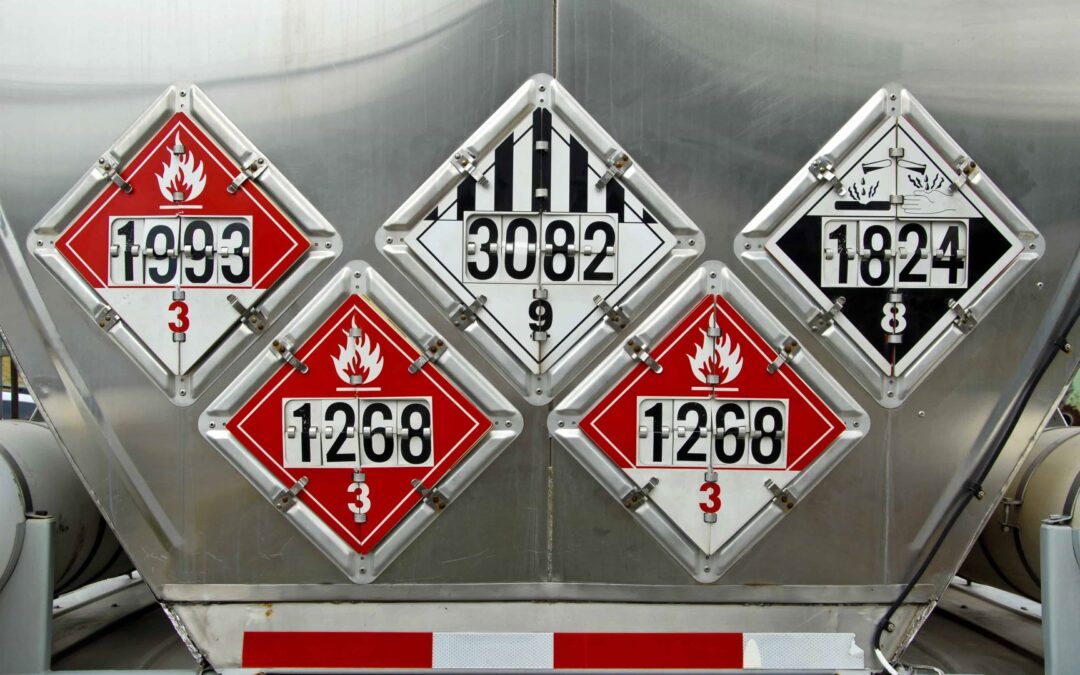Dangerous goods are articles which are capable of posing a hazard to health, safety, property, or the environment. Since these materials pose a serious risk during transportation, a system of federal and international regulations exists to ensure dangerous goods are safely carried by surface, ocean, and air.
There are nine hazard classes of dangerous goods representing hazards such as flammability, combustibility, toxicity, corrosivity, and others. If a substance meets the criteria of any one or more of these hazard classes, it becomes “classified” and regulated accordingly. Regulated dangerous goods range from products commonly used by consumers (paints, toiletries, etc.) to explosives and nuclear material.
Regulatory Overview
The U.S. laws governing the shipment of hazardous materials (HAZMAT) are established by the U.S. Department of Transportation and are found in the U.S. Code of Federal Regulations (CFR). Title 49 is a nine-volume set that deals primarily with transportation. Section §171.2 of the regulations states that no person may offer a hazardous material for transportation in commerce unless the hazardous material is properly classified, described, packaged, marked, labeled, and in condition for shipment as required by the regulations.
Who needs training?
Training must be provided by employers to ensure HAZMAT employees are familiar with the general provisions of hazardous materials regulations, are able to recognize and identify hazardous materials, and have knowledge of the specific requirements that relate to their job functions. Employees who likely require training include those who:
- Purchase or select packages for hazardous materials;
- Prepares the packaging for shipping (box selection, labeling, etc.);
- Completes paperwork, selects labels, or selects placards;
- Signs manifests or paperwork such as hazardous waste shipping papers;
- Handles hazardous materials including loading and unloading;
- Repairs, modifies, sells or tests packaging for use in shipping hazardous materials;
- Screens baggage, cargo, or mail;
- Transports hazardous materials or operates a vehicle transporting hazardous materials;
- Accepts/transfers/handles/unloads cargo; and,
- Anyone who supervises or provides training to any of the above employees.
Training Requirements
The general requirements for training are found in 49 CFR Part 172, Subpart H.
| §172.704(a)(1) – General Awareness/familiarization | Provides familiarity with the hazardous materials regulations and the ability to recognize and identify hazardous materials |
| §172.704(a)(2) – Function specific | Training regarding regulations that are necessary to the job functions performed by employees |
| §172.704(a)(3) – Safety | Training that will provide emergency response information, measures to protect employees from hazards presented by exposure to hazardous materials, and methods to avoid accidents, including best practices in handling packages containing hazardous materials |
| §172.704(a)(4) – Security Awareness | Training that provides an awareness of security risks associated with shipments of hazardous materials and methods to improve security |
| §172.704(a)(5) – In-depth security | Each facility required to have a security plan in accordance with 49 CFR (§172.800) must train HAZMAT employees on the security plan and its implementation. |
A new HAZMAT employee or a HAZMAT employee that changes job function must be trained before performing HAZMAT job functions unless:
- The employee performs tasks under direct supervision of a trained and knowledgeable employee
- Training is completed within 90 days after employment for change in job function
HAZMAT employees must receive training at least once every 3 years. A record of current training, including the three preceding years, must be maintained on site for each HAZMAT employee for the length of employment and 90 days post-employment.
What can Spencer-SHE do for you?
Do not take any chances with HAZMAT compliance. Violations can result in fines and even imprisonment:
- Civil infractions – up to $81,993 per day; up to $191,316 if violations result in death, serious injury, or destruction of property;
- Violations relating to training – minimum penalty of $493;
- Violations can result in criminal prosecution including up to 10 years in prison.
Our team of experts have over 50 years of assisting clients with HAZMAT compliance and training. We offer:
- HAZMAT training (all levels),
- Hazardous Materials Registration,
- Hazardous Materials Security Plan development and implementation,
- Records Management,
- And anything else you may need related to hazardous materials compliance!
Contact us today to set up a consultation!

